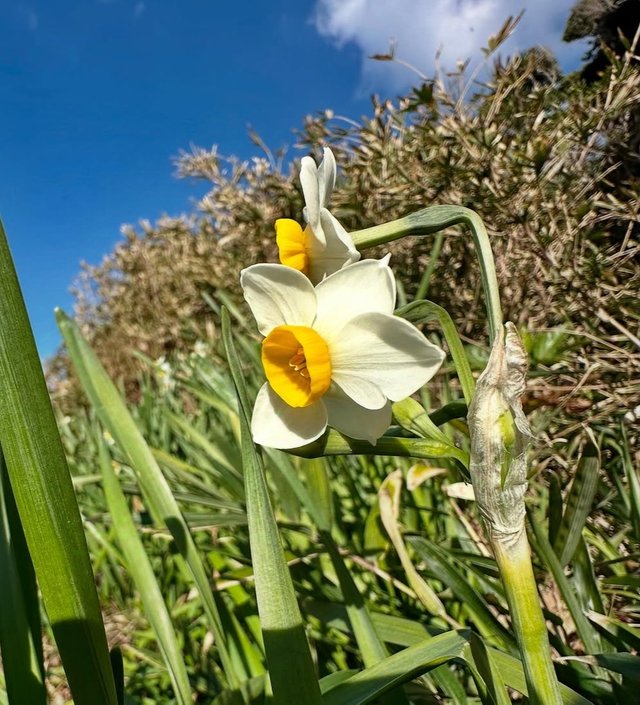So Beautiful Bunch-Flowered Daffodil Flower
Exploring the Elegance of the Bunch-Flowered Daffodil.
The Bunch-flowered daffodil, scientifically known as Narcissus tazetta, is a captivating member of the daffodil family that brings charm and vitality to gardens and landscapes. Renowned for its clusters of small, fragrant blooms, this species is a favorite among gardeners and flower enthusiasts worldwide. In this post, we’ll delve into the characteristics, growing conditions, symbolism, and reasons why the Bunch-flowered daffodil is a standout among springtime blooms.
Botanical Characteristics
The Bunch-flowered daffodil is part of the Amaryllidaceae family, a group of flowering plants that includes a variety of daffodils. Unlike the large, solitary blooms of the traditional daffodil, Narcissus tazetta produces multiple flowers per stem—hence the name "bunch-flowered."
Each stem can bear 6 to 20 small, trumpet-shaped flowers, often in shades of creamy white or yellow with a contrasting cup that can range from pale yellow to orange. These flowers exude a delightful fragrance, making them particularly desirable for indoor arrangements and gardens.
Natural Habitat and Distribution
Bunch-flowered daffodils are native to the Mediterranean region and parts of Asia, thriving in warm, temperate climates. Over centuries, they have been cultivated and naturalized in regions as diverse as southern Europe, North Africa, the Middle East, and even parts of East Asia. Their adaptability has made them a popular choice in gardens across the world.
Growing Conditions and Care
One of the reasons Narcissus tazetta is so beloved is its ease of cultivation. Here’s what these daffodils need to flourish:
Sunlight: They prefer full sun to partial shade, making them suitable for a variety of garden settings.
Soil: Well-drained soil is essential to prevent bulb rot. A slightly acidic to neutral pH level is ideal.
Watering: While they are relatively drought-tolerant once established, they need consistent moisture during their active growth period in fall and spring.
Planting: Plant bulbs in autumn at a depth of 6–8 inches and space them about 4 inches apart.
These hardy plants require minimal maintenance and often naturalize well, forming dense, colorful clumps over the years.
Symbolism and Cultural Significance
The Bunch-flowered daffodil holds significant symbolic meaning in various cultures. In Chinese tradition, these flowers are associated with good fortune and prosperity, particularly during the Lunar New Year. Their ability to bloom during the winter months in warm climates makes them a symbol of resilience and hope.




